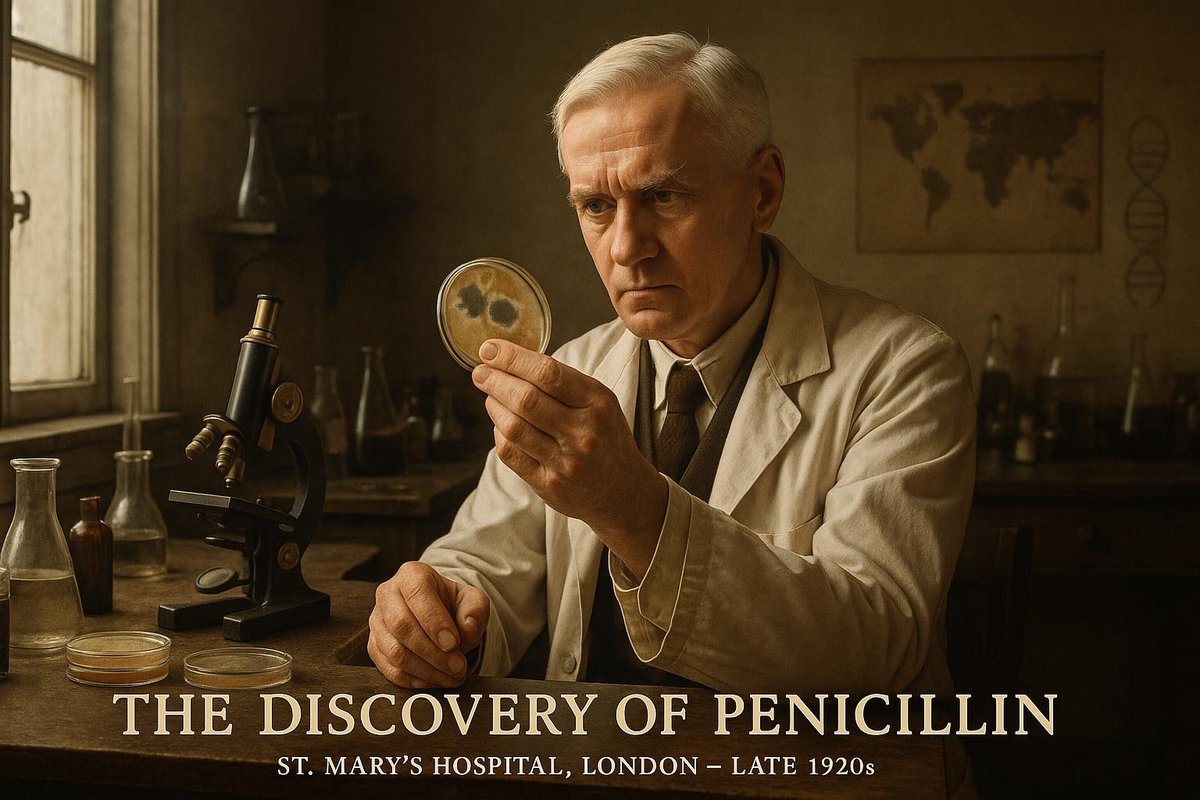
The Humble Origin of a Medical Revolution
In 1928, a seemingly insignificant event occurred in a cluttered laboratory at St. Mary’s Hospital in London. Alexander Fleming returned from a holiday to find a petri dish with bacteria contaminated by mold. It was a routine occurrence in any lab, yet this mold would alter the course of medical history.
Before this discovery, infections were often fatal. The medical community was aware of bacteria, yet treatments were limited to antiseptics, which were often more harmful than beneficial. Fleming’s keen observation skills allowed him to see what others might dismiss. He noted that the mold, later identified as Penicillium notatum, killed the surrounding bacteria.
- Fleming’s laboratory was not state-of-the-art; rather, it was a typical research space of the era, filled with petri dishes and microscopes.
- He was known for his meticulous nature, regularly documenting his findings in detailed notes.
This discovery came at a time when the world was recovering from World War I and bracing for future conflicts. The interwar period was marked by advancements in science and technology, setting the stage for Fleming’s findings to eventually transform medical treatment.
Key Figures: The Man Behind the Mold
Alexander Fleming, a Scottish bacteriologist, was the central figure in this groundbreaking discovery. Born in 1881, he was no stranger to the intricacies of the microscopic world. His work during World War I with antiseptics likely influenced his understanding of bacteria and infection.
Fleming’s mentor, Sir Almroth Wright, a pioneer in immunology, also played a crucial role in shaping his scientific approach. Wright’s emphasis on empirical evidence and skepticism of conventional wisdom encouraged Fleming’s methodical nature.
- Fleming’s academic journey led him to St. Mary’s Hospital, where he had a long-standing focus on bacterial research.
- His discovery, while accidental, was a testament to his ability to connect observations with potential applications.
Interestingly, it wasn’t until the 1940s that penicillin was mass-produced, thanks to the efforts of scientists like Howard Florey and Ernst Boris Chain. They built upon Fleming’s initial discovery, turning it into a drug that saved countless lives during World War II.
A Turning Point: From Mold to Medicine
The turning point for penicillin came with the realization that it could be mass-produced. Fleming’s initial discovery was just the beginning. The subsequent efforts of Florey and Chain at the University of Oxford during the late 1930s and early 1940s were pivotal in transforming penicillin from a laboratory curiosity into a medical powerhouse.
Florey and Chain collaborated with American pharmaceutical companies, which were crucial in scaling up production. This collaboration marked a significant shift, demonstrating the power of international cooperation in scientific endeavors.
- Their work coincided with World War II, creating an urgent need for effective antibacterial agents.
- The mass production of penicillin was a logistical and scientific milestone, involving complex fermentation processes.
No wonder penicillin is often credited with revolutionizing modern medicine; it turned the tide in treating bacterial infections, vastly improving survival rates for wounded soldiers and civilians alike.
Impact on the World: A Legacy of Healing
The impact of penicillin on global health cannot be overstated. By the mid-20th century, it had become a staple in treating bacterial infections, saving countless lives. The success of penicillin paved the way for the development of other antibiotics, fundamentally changing the landscape of medicine.
Healthcare systems worldwide began to incorporate antibiotics as standard treatment, drastically reducing mortality rates for illnesses once considered deadly.
- This medical breakthrough also spurred further research into antibiotic resistance, an issue that remains pertinent today.
- Communities far and wide benefitted, highlighting the importance of scientific research and innovation.
As time goes on, the discovery of penicillin serves as a reminder of the serendipitous nature of scientific exploration, where curiosity and chance can lead to profound societal transformations.
Conclusion: Today, the legacy of Alexander Fleming’s discovery endures. It’s a testament to the power of observation and the unforeseen consequences of seemingly minor laboratory mishaps. The story of penicillin illustrates how the intertwining of curiosity, discipline, and innovation can lead to breakthroughs that define eras.
Fuel Someone Else’s Curiosity: Share this article with friends and family to spark conversations about the incredible ways chance and determination intersect to shape our world. Encourage others to explore the history behind the common medicines we sometimes take for granted. After all, who knows what inspiring story lies in the next petri dish?

Leave a Reply